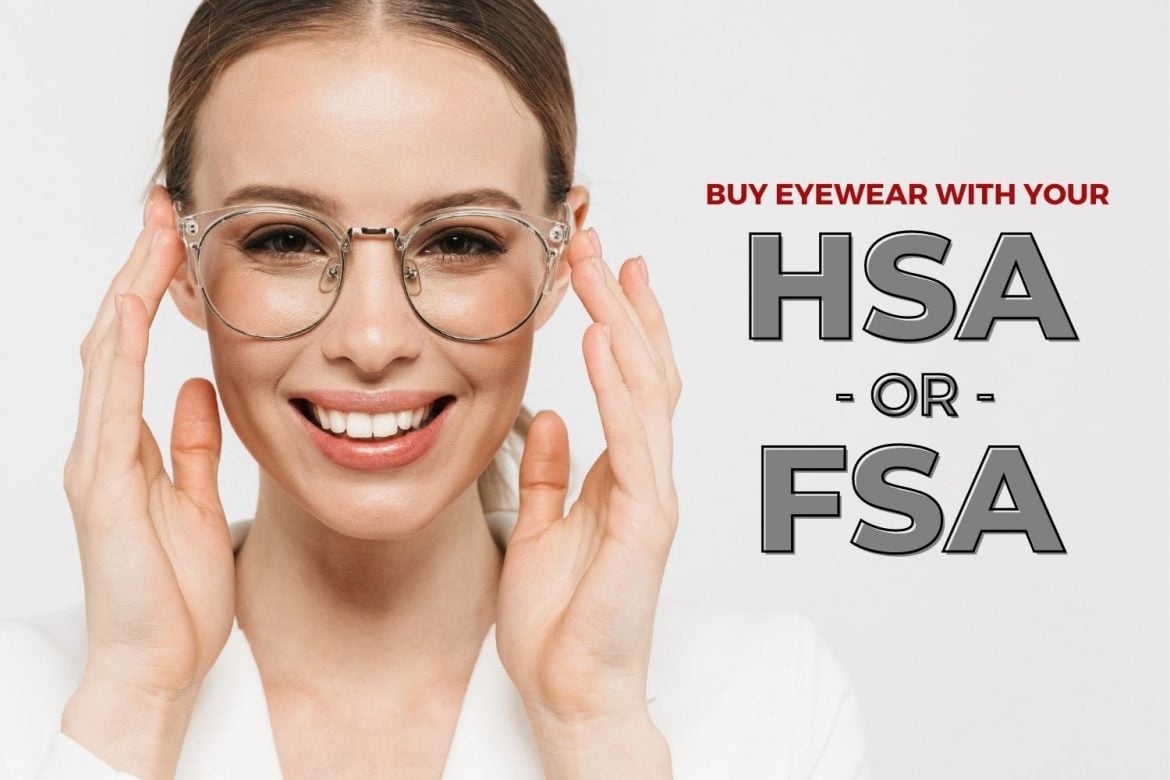![]()
You have an HSA or FSA account. Were you aware it can be applied to buy prescription eyewear? The end of the year—or the tax year—may be the ideal time to look at spending your HSA or FSA funds on “qualified expenses.”
Remember, you don’t want to spend the funds on non-qualified items because you could be responsible for a 20% penalty. Here’s what does and doesn’t qualify.
Eyewear and services for correcting your vision are classified as a “medical product” and can therefore be purchased with an HSA or FSA:
- Prescription eyeglasses
- Prescription sunglasses
- Contact lenses
- Eye examinations and eye surgery
- Reading glasses
You can’t use an HSA or FSA to buy:
- Non-prescription eyeglasses (except reading glasses)
- Non-prescription sunglasses
- Insurance premiums
- Non-prescription colored contact lenses
What are HSA/FSA accounts?
Health Savings Accounts (HSA) and Flexible Spending Accounts (FSA) share many similarities, such as:
- Contributions are pre-tax
- Contributions are tax deductible
- Available through employers
- Preset contribution limits
- Share the same list of “qualified expenses”
Much like a checking account, HSA/FSA funds are managed by a financial institution. You get a debit card, which can be used to pay for qualified medical expenses throughout the year.
HSA vs. FSA: What’s the difference?
Who is eligible?
The main difference is that not everyone qualifies for an HSA. Only those with a high deductible health plan are eligible. FSA, on the other hand, is available regardless of your deductible.
Maximum contribution
Contribution limits for both HSAs and FSAs are updated annually by the IRS. Back in 2019, when this article was first published, the HSA contribution limits were $3,500 for individuals and $7,000 for families.
For 2023, the maximum contribution into an HSA is $3,850 for an individual and $7,750 for families. Additionally, individuals age 55 and older can make a $1,000 “catch-up” contribution.
The FSA contribution limit has also increased over time. The 2023 FSA Health pre-tax deduction limit is now $3,050 for individuals, up from $2,700 in 2019.
Rollover
Perhaps the most significant advantage of an HSA is that any remaining balance rolls over into the next year, making it an excellent vehicle for long-term health care savings. HSA funds can accumulate indefinitely, potentially growing through investments.
With an FSA, the rules are more restrictive. Many employers follow a strict “use it or lose it” policy. However, your employer may offer one of these two exceptions:
- A “grace period” of 2 ½ months allows you more time to use the previous year’s balance.
- Up to $500 rollover into the next year.
It’s important to note that employers are not legally obligated to offer either option. Some employers may not allow any rollover at all. To avoid any end-of-year surprises, make sure to check with your HR department about your specific plan’s rules.
Funds transfer
In the event that you change employers, you can take all HSA funds with you from one employer to another. With an FSA, you’ll lose the funds when you change employers.
Qualified expenses
Now that you know how the accounts work, let’s take a look at a few qualified expenses available through EZContacts:
When ordering glasses, remember to browse the upgrade options such as premium anti-reflective coatings, polarized filters (sunglasses), high-index lens materials, and light-sensitive add-ons. With so many lens options available, you can explore various combinations to find a package that aligns with your budget and vision needs.
You can even use your HSA/FSA funds for qualified purchases for your spouse, children, or any other dependent you claim on your taxes. Even if your child is no longer a dependent but remains on your health insurance, you can still use these funds for their qualified expenses as long as they will be under 26 by the end of the current year.


